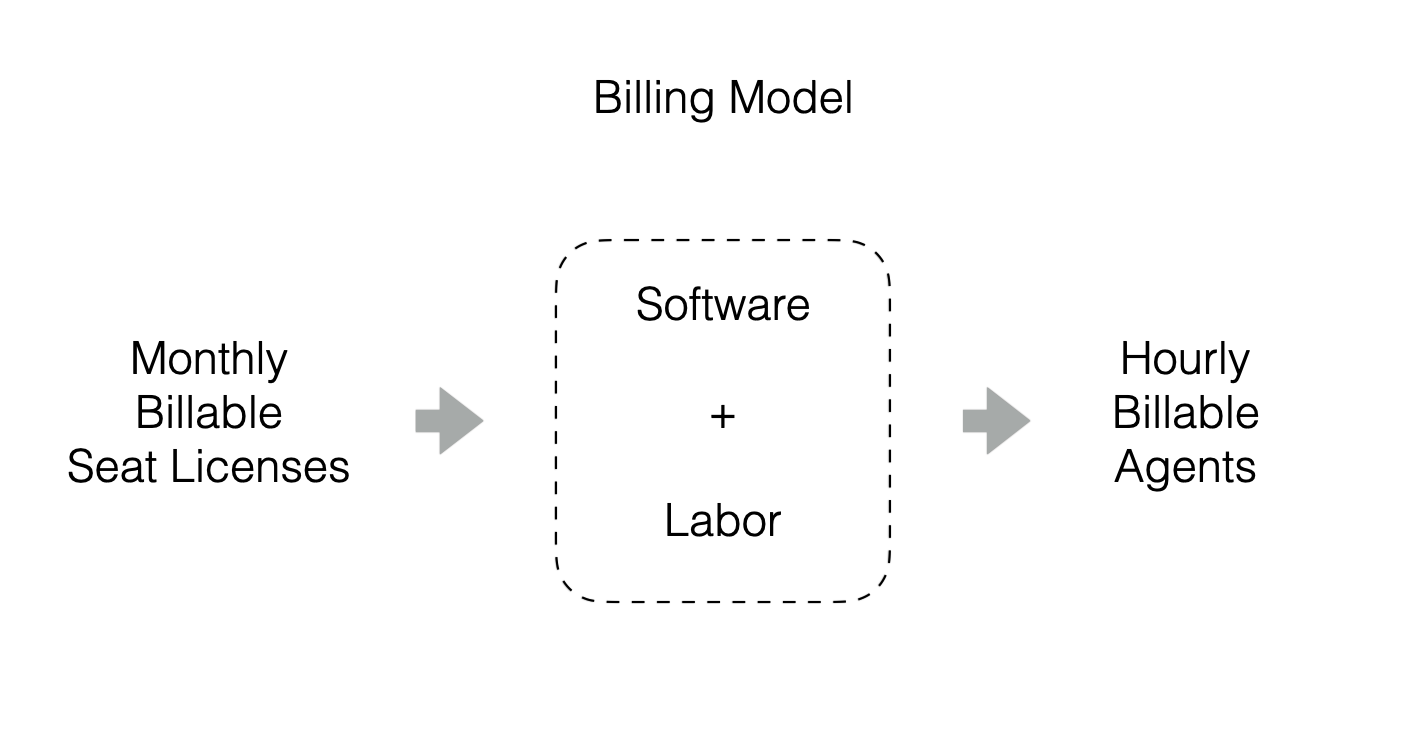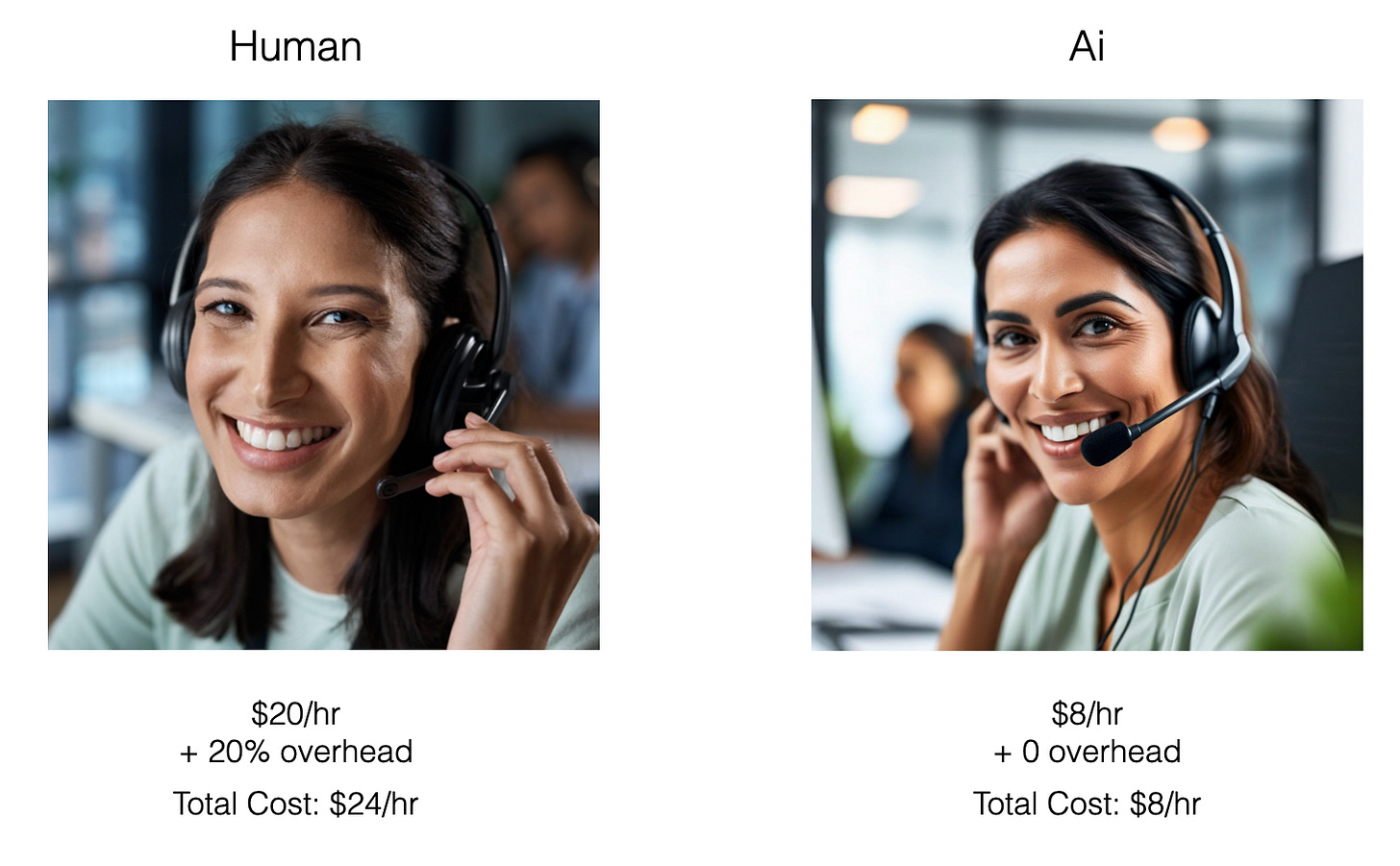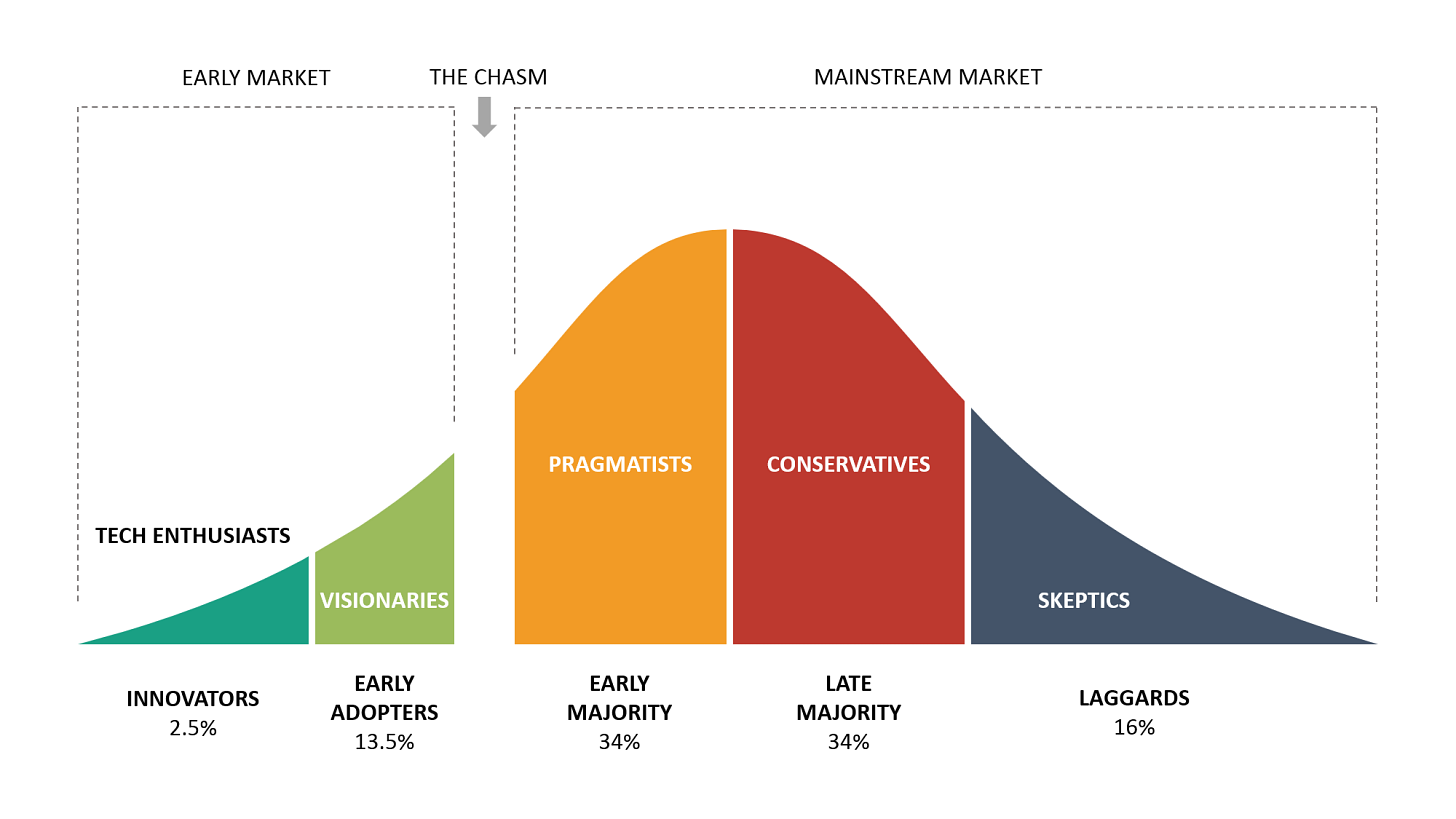Part 1 of this series introduced Agentic AI—what it is and how it works. In this next installment, we explore the transformative impact Agentic AI could have on business models, redefining how enterprises operate, structure labor, and generate value.
Today, Ai helps us in two key areas (among others) First, in reducing the time and effort to get work done, and second in significantly expanding creativity and output. While AI is currently deployed at a task level, its macroeconomic implications are profound. A brief exploration of industry trends reveals that one of AI’s most disruptive impacts will be a fundamental shift in business models. These shifts will likely unfold in waves, and we now stand at the transition between one wave—the rise of automation—and another: the emergence of sophisticated digital labor.
Digital Labor
The emergence of AI agents is ushering in a new paradigm of "digital labor," where automated systems can autonomously handle complex tasks traditionally performed by human workers. A recent Hitachi Ventures article discusses the concept of "digital labor" and potential implications on how we work. Unlike traditional software tools that simply augment human capabilities, these AI agents function more like virtual employees – they can understand context, interpret intentions, and adapt to new situations with minimal human oversight. This shift in capabilities represents more than just an advancement in automation; it signals a fundamental change in how we think about work and workforce composition. Companies are beginning to treat these AI systems not as mere tools to be licensed, but as digital workers to be "hired" at hourly or outcome-based rates. The distinction is crucial: while traditional software requires human operators to achieve results, these AI agents can independently drive end-to-end processes, from understanding tasks to executing solutions. This transformation is particularly evident in high-skill domains like healthcare, legal work, and software development, where AI agents can perform increasingly complex tasks that previously required significant human expertise and judgment.
Hourly Agents
This shift in delivery from human powered SaaS platforms to Ai powered digital labor is opening up a significant opportunity for SaaS companies, namely, hourly billable agents. The article by Sequoia Capital referenced in part 1 of this series further lays out the case how reasoning agents will drive a shift to the hourly billable agent. The new form of "slow thinking" powers models to reason with more real-time data and act with more sound decisions. It also allows companies to expand their business model from one of monthly SaaS seat licenses to a "software + labor" model to create hourly billable agents.
To date, sound decisions were primarily the domain of humans with Ai occasionally producing easily attacked errant judgement. As models slow down, find more information and improve their judgement, comparison with existing human decision making will increasingly come closer to some degree of parity (or appear to). As such, hiring decisions of digital labor vs. human labor becomes an increasingly commoditized decision process. Agents could be an attractive option for companies as they seek to build more, reduce cost or likely both in the coming years.
This shift in perspective, effectively opens up the $8.5 Trillion US labor market and make clear why VC's are excited about the opportunity to tap into it. It's a welcome new source of revenue to the big tech firms which may find themselves hitting a revenue plateau.
Use Cases
Healthcare
Healthcare for example is an industry facing massive challenges. Enflamed by Covid, clinician burnout and dropping rates of people going to medical school means we will not have enough physicians to take care of the population. Left unchanged this will continue to get worse and worse as the years pass. Companies like Hippocratic.ai are hoping to fill the gaps in various aspects of care from patient check-ins to adherence and more. The company is not just selling a SaaS solution, it is selling Healthcare agents at an hourly rate to help meet the demand of these clinicians.
Software Development
Software engineering has companies like Devin.ai, cursor, replit, and others working to automate the software development process. Today developers can use these platforms to develop software in much less time. These firms and more are no doubt working on expanding these human run platforms to agent run platforms that can be billed at a fraction of the cost of a traditional software developer.
Manufacturing
Manufacturing has long embraced automation, but Agentic AI has the potential to enable systems to make real-time decisions, enhancing human-machine collaboration. Companies like Juna.ai are at the forefront, developing AI-driven solutions that optimize production processes and improve operational efficiency. The Abu Dhabi National Oil Company (ADNOC) has also embraced Agentic AI, deploying autonomous systems to monitor and manage complex oil extraction operations, thereby enhancing safety and productivity. In a recent report, the World Economic Forum highlighted the transformative potential of AI agents in manufacturing, emphasizing their role in creating near-autonomous systems and seamless human-machine collaboration. Other notable companies contributing to this evolution include Covariant, which specializes in AI-powered robotic systems for warehouses, and Figure AI, developing humanoid robots designed to perform manual labor in industrial settings. These advancements underscore a significant shift towards more intelligent, responsive, and efficient manufacturing environments.
Legal
In legal services, Harvey, Norm.ai, Westlaw Edge, and others are deploying platforms that take the highly structured field of legal and regulatory and integrate generative and reasoning models to conduct legal research, draft contracts, summarize case law, and even generate arguments in a fraction of the time it would take a junior associate. These companies are receiving great interest from VC firms as can be seen in the recent $300m Series D raise by Harvey.
The Billable Hour
Unlike previous advancements in automation, which typically optimized tasks within existing workflows, AI agents have the potential to completely reframe how labor is valued, structured, and billed. On the one hand while digital labor companies fight to justify their billable hour, the other side, the human billable hour, will be fighting to justify itself.
With Ai as equalizer, the traditional equation of effort to compensation comes into question. From the seller perspective, if one can do four times the work in an hour one could speculate that the hourly rate would have to increase accordingly. From the buyer perspective, in a world where Ai reduces the amount of time to do a task, why pay the same amount it used to cost? The former answer could expand productivity while maintaining (or increasing) wages. The latter dynamic could lead to a situation where firms use AI-driven efficiencies to undercut competitors, delivering the same work at a fraction of the cost. Initially, this might seem like a positive shift—reducing expenses for clients and increasing accessibility to high-quality services, but history says otherwise.
The Legal Field: A Prime Example of AI-Driven Disruption
Few industries are as deeply entrenched in the billable hour model as the legal profession. Traditionally, firms have operated on a time-based structure, where associates and partners log hours for tasks ranging from research and document review to contract drafting and litigation support. However, the advent of AI-powered legal tools is challenging this model in profound ways.
While the democratization of legal services creates cost efficiencies for clients, it also means that firms can no longer rely on these once-premium services as primary revenue drivers. The legal professionals who thrive will be those who focus on high-value advisory roles, complex litigation, and strategic negotiation, where human expertise remains indispensable. Alternatively, instead of competing purely on price, some lawyers will differentiate themselves as AI-enhanced legal strategists—leveraging AI not just for efficiency, but to deliver deeper insights, faster decision-making, and better case outcomes. Boutique firms and solo practitioners may benefit the most from AI, as they can now handle more cases with fewer resources, competing more effectively with larger firms. In-house legal teams may also increasingly rely on AI-driven tools to reduce reliance on external counsel, forcing law firms to rethink their pricing structures.
The Ai-gency
The advertising industry has long been structured around a mix of billable hours, retainers, and project-based pricing. Agencies charge for strategic planning, creative development, media buying, and campaign execution. But as AI continues to disrupt the creative and marketing landscape, the traditional business models of advertising agencies are exposed to change.
Today, AI-generated content & design tools like Midjourney, DALL·E, and Runway can produce ad creatives, social media visuals, and even entire video ads in minutes—work that previously took days or weeks. Automated copywriting with ChatGPT, Jasper, and Copy.ai can generate headlines, ad copy, and blog posts in seconds, reducing the need for copywriters to spend hours crafting content. AI-driven media buying & optimization: Google Performance Max, Meta’s AI ad platforms, and programmatic advertising engines can automatically optimize campaigns in real-time, making traditional media planning roles less critical.
Beyond single purpose tech we are also beginning to see full Agentic Pipelines being developed. Tools like LTX Studio are chaining multiple functions together into a single video production pipeline. Video production consists of idea generation, casting, scripting, still imagery, video concepts, visual effects, editing, etc... LTX studio packages these all into a single pipeline in which creators can manipulate output throughout the pipeline, condensing what may have taken a team of 10 several weeks can now be done in 1/10th of the resources and time.
Redefining Value
Without question, Ai is forcing the re-evaluation of value. As in all traditional market dynamics, the market will set the price and determine value. Firms will inevitably run into project bids and billing discussions about the value of the billable hour or project delivery in an Ai powered economy. They will have several strategic options when it comes to pricing and service models. One approach is to maintain current hourly rates while leveraging AI to complete more work in less time, increasing margins but risking client pushback as they expect costs to reflect reduced effort. Another option is to lower rates to stay competitive, using AI to offset the reduced revenue per project. The risk here is of course a race to the bottom, where firms continuously undercut each other, ultimately eroding profit margins, devaluing services, and making high-quality work unsustainable.
Aside from these reactive strategies, companies have options to rethink their business models to something old, new, or different.
Outcome-Based Pricing – Instead of charging for time or deliverables, companies could shift to performance-based models, where compensation is tied to measurable success (e.g., increased sales, customer acquisition, or brand engagement).
AI-Enhanced Strategy Consulting – Instead of selling execution, companies could position themselves as AI-powered strategic partners, charging for deep insights, positioning, and Ai-powered strategic direction.
Subscription-Based Creative Services – Some companies could move to a SaaS-like model, where clients pay a fixed monthly fee for AI-powered services that leverage digital and human labor.
Licensing & IP Monetization – companies could develop on-demand proprietary AI models and products that are licensed to brands rather than selling services.
Regardless of which business models are chosen, in an AI-driven world, companies that cling to traditional pricing models and labor-intensive processes may struggle. Those that embrace AI as a force multiplier—enhancing their capabilities rather than replacing them—will thrive.
Also important to note is the reality that established players and relationships will not go gently into that good night. It is unlikely that Accenture, Deloitte, and many more will sit by as Ai destroys their business models. "Follow the money" it is said and this wisdom no doubt will hold true for Ai. While small, nimble startups will be able to innovate faster and take market share from bigger players, the established businesses will continue to hold value in the age of Ai, particularly the ones with data and resources to train big models of their own.
Tangible vs. Intangible
The distinction between tangible output vs. intangible human factors (relationships, communication, politics, responsibility, etc…) are increasingly coming into focus as Ai evolves to address the work product side, but lacks the human aspects of how the world operates. As much as Ai can produce, there is a lot it still can't do. Finesse, intuition, leadership, trust, emotional intelligence, politics, egos are all part of the human condition that Ai is not intentionally being trained on (yet). For example. An Ai agent can pull together a report on the latest trends in Ai and how it might apply to a business, but it cannot understand that the CEO has no interest in hearing anything about it, especially not from Dave who insulted him at the company party. An Ai agent is also not going to go to the bar with you to discuss why you lost the project bid. These intangibles, sometimes difficult to clearly see and understand in other humans, are actually quite important to how the world operates.
Safe...for now
With this in mind, humans still hold the upper hand in many critical aspects of work. While AI can generate compelling content, it lacks true emotional intelligence and the lived experiences that allow humans to craft stories that resonate deeply with audiences. It lacks cultural nuance, tapping into shared experiences, and evoking emotions in a way that builds authentic connections.
Ethical and legal considerations also remain a key area where human oversight is essential. AI lacks the moral reasoning and contextual awareness required to navigate complex ethical dilemmas, avoid bias, and ensure compliance with ever-evolving regulations. While AI can assist with pattern recognition and optimization, true creative differentiation—the ability to push boundaries, challenge conventions, and do so in an ethical framework—remains an inherently human strength.
For these reasons and more, Ai Agents will indeed require human oversight for years to come. One need not look further than the lawsuits and headlines of Ai being trusted too much. The risk of full autonomy in agents is simply too great and the tech still early. For the foreseeable future, humans will still be the ones telling the stories, responding to crisis, managing office politics and reading the room. But they will be doing it more and more with their digital coworkers.
Adoption
If there were a shift in SaaS models toward hourly billable AI agents, it would represent a tectonic shift in traditional work—both in its scale and speed. While adoption across different industries and companies will vary, mass adoption of AI agents—regardless of their effectiveness—will likely be a slow and uneven process. History has shown that transformative technologies rarely achieve overnight ubiquity due to structural resistance, cultural adaptation, and economic realignments. For example, The Personal Computer began to emerge in the 1970s, but It wasn’t until the 1990s that PCs became indispensable across all industries, driven by cost reductions, improved software, and generational shifts in the workforce. The Cloud Computing Revolution started in the early 2000s and is arguably still under way with a lot of companies and industries, especially big older ones. Despite the clear efficiency gains of cloud-based software, many enterprises have hesitated to move away from on-premise servers due to security concerns and legacy systems. Widespread cloud adoption took over a decade, accelerating only after companies like Amazon (AWS), Microsoft (Azure), and Google (GCP) proved the business case at scale. Adoption is also dependent on external pressures such as economic downturns, regulatory landscapes, and industry-specific needs
Such is the way with technology adoption. These same challenges faced by new technology adoption for many years will indeed be faced by Agentic Ai and digital labor. It will likely follow the typical "adoption curve".
Source: https://www.business-to-you.com/crossing-the-chasm-technology-adoption-life-cycle/
Actual adoption will be interesting to watch. Due to the complexity and important nature of some of the increasingly cognitive tasks “results may vary”. A notable factor here too is how fast Ai is developing and making tech that was released and tested 3-6 months ago outdated.
Challenges in Digital Labor
Beyond Agentic Ai simply lacking a number of important human traits, somewhere in the fine print is the complexity and challenges of integrating digital labor. Starting with a traditionally basic one - service level agreements. How will these evolve when Microsoft, AWS, Open Ai and others provide decision making? Today, they all have disclaimers stating “Ai is experimental and subject to hallucinations”. This is unlikely to pass too many governance discussions when it comes to automating workflows with Agents that randomly lie or make terrible judgement calls. Add to this the legal questions about liability, complexities in vendor evaluation and contract negotiations before any deal gets done.
Beyond these usual suspects a glaring challenge for those selling Agentic systems will be the unending number of outstanding questions that will take time for both the tech and the humans to grapple with. While blog posts and commercials can inspire thoughts about the potential for Agentic Ai and enumerate the features, the truth is that human-based systems have many questions to be answered before we will see substantial adoption.
How Will Businesses Justify AI-Generated Billable Hours?
If an AI agent can complete a task in seconds, does it still justify hourly billing?
Will companies shift from per-hour pricing to per-outcome or per-task billing models?
How Will Companies Structure Human-AI Collaboration?
Will AI agents work independently, or will they require human oversight for approval?
How will businesses handle accountability and liability when AI makes decisions?
What Regulatory and Ethical Barriers Will AI Face?
Will governments impose restrictions on AI labor models (e.g., taxation, licensing)?
How will AI agents comply with labor laws and industry regulations?
Will AI Disrupt Traditional Employment Models?
Will AI agents replace human contractors, or will they augment human work?
Will companies use AI as a way to reduce workforce costs, leading to new economic inequalities?
How Will Market Forces Respond?
Will early adopters gain a competitive advantage, forcing laggards to adopt AI out of necessity?
Will industries resist AI agents the way some unions resisted automation?
Many questions remain for organizations, industries, governments, and co-workers of Ai agents. While these questions evolve, one thing remains clear: as agents evolve and these questions are answered, the future will look quite different.
Whats Next
As the saying goes, we tend to overestimate in the short-run and underestimate in the long-run. As with previous technologies, Agentic Ai will have to navigate the hype cycle that we are only at the beginning of today. Some of today's marketing promises will frustrate explorers as the headlines ride the rollercoaster of hype. But there is a degree of inevitability here. The question is not if this shift will happen—but rather when and how industries will adapt. There will no doubt be a pendulum swinging for years to come. Much like offshoring gave way to reshoring, companies will inevitably have some false starts, especially with a technology in its infancy. But just as computers, the internet, cloud computing, automation eventually became industry norms, AI agents will likely redefine how work is structured, priced, and valued. The key for all of us will be to understand the impact of this transformation as it does so.
In the next post we will dive into some of the tech platforms (Azure, AWS, others) that offer Ai Agents as well as the considerations when shifting work from human-based workflows to machine-based ones.
Stay tuned and subscribe.





